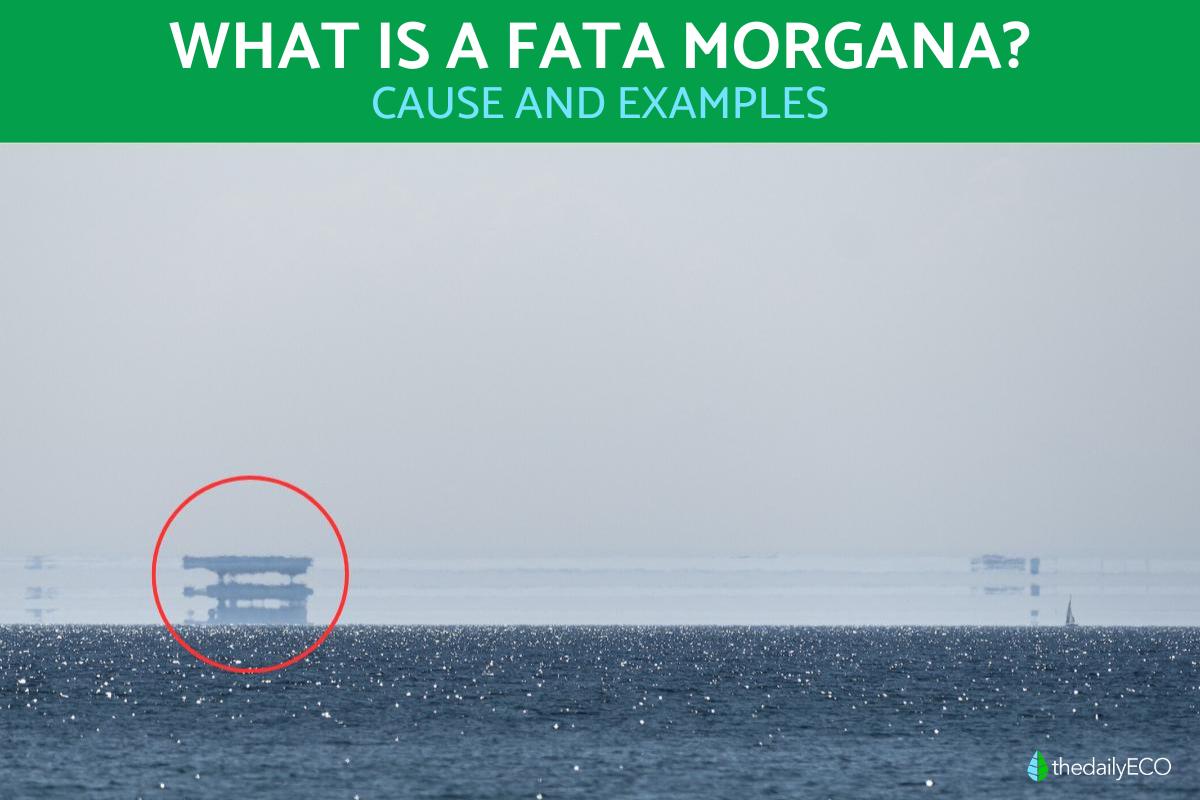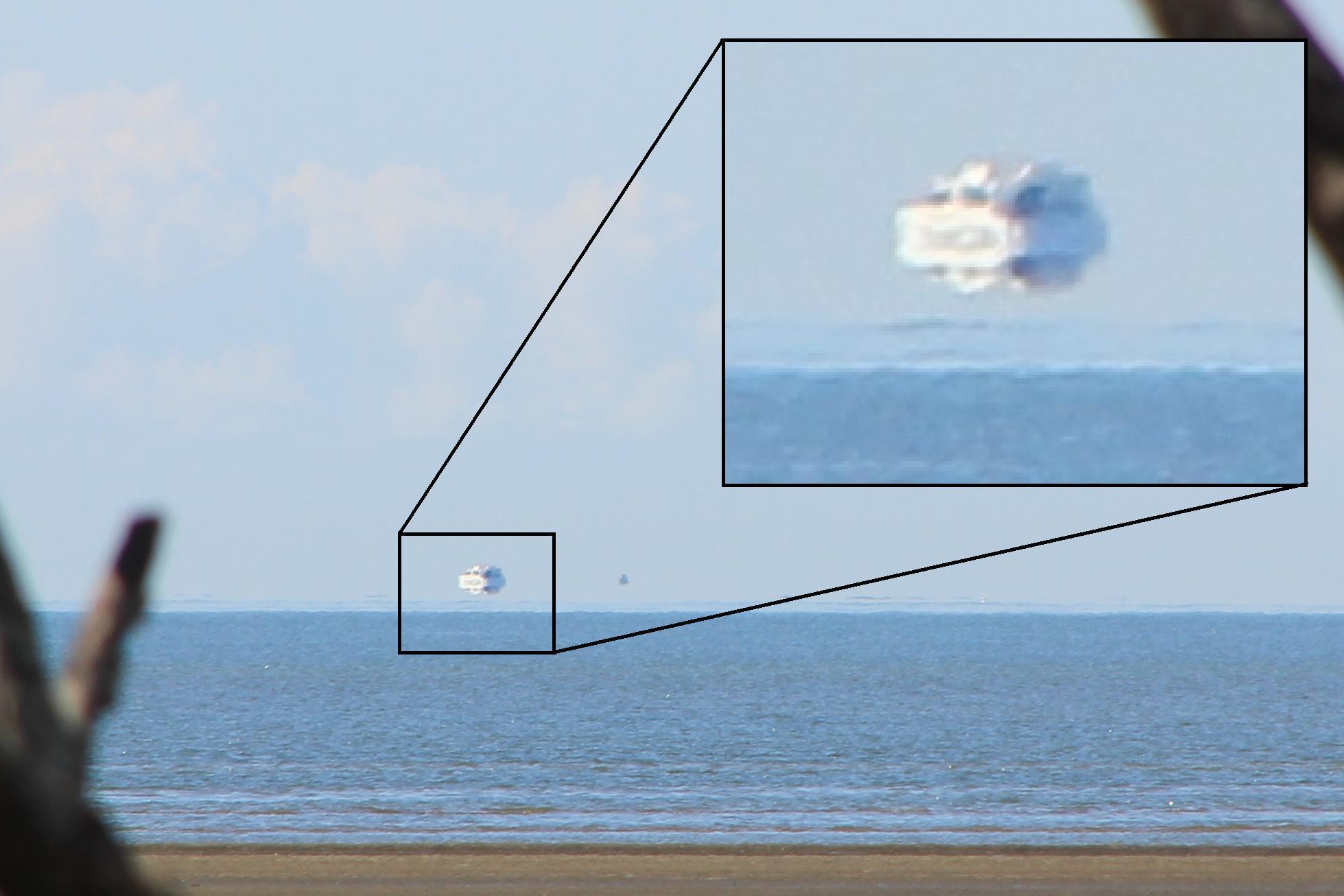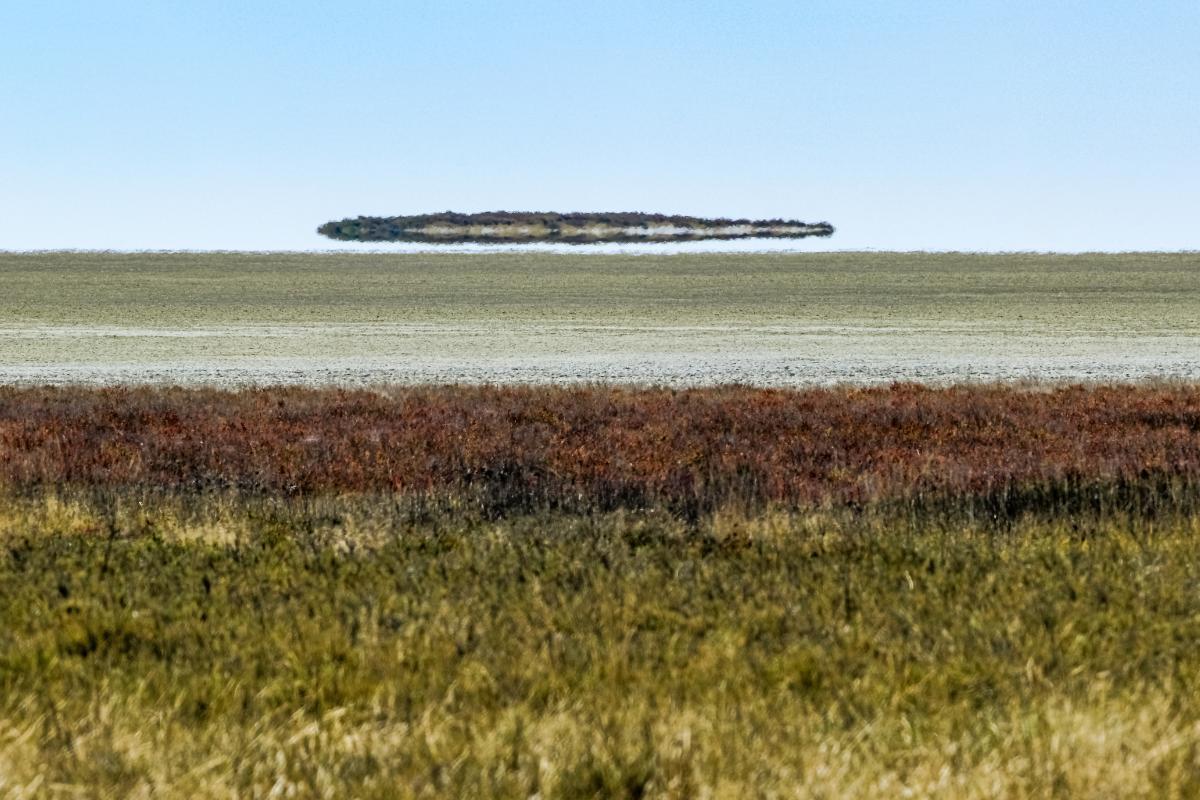The Fata Morgana Illusion


The Fata Morgana phenomenon is a type of mirage that occurs due to the refraction of light in layers of air with different temperatures. This refraction causes the distortion of objects on the horizon. It is an optical illusion which has been observed in various parts of the world. Its distortion effects has been the cause of many myths and legends throughout history, due to the misunderstanding of the phenomenon. thedailyECO explores the cause the Fata Morgana illusion and examples which many have witnessed.
What is the Fata Morgana illusion?
The Fata Morgana illusion or phenomenon is a complex and changing type of mirage. Mirages distort the appearance of objects to the human eye. With the Fata Morgana phenomenon, the mirage causes objects on the horizon to appear elongated, floating or even multiplied Its name comes from the legend of Morgana, the sorceress of Arthurian mythology. It was believed in ancient times that these optical phenomena created by magic.
Mirages ate most commonly seen in the desert or on hot roads. In contract, the Fata Morgana occurs under specific atmospheric conditions and is much less common. It can occur both at sea and on land. It often gives the impression that ships, mountains or buildings are suspended in the air or deformed in some unusual way, as can bee seen in the photos of the Fata Morgana phenomenon above and below.
This phenomenon has been documented throughout history and has sometimes contributed to accounts of mysterious sightings. These range from ghost ships to entire floating cities apparently appearing on the horizon. Today it is understood as an optical phenomenon based on the refraction of light, but its effect is still impressive and can generate surprising illusions even for experienced observers.
If you would like to learn more about how light refraction can appeal to our senses, take a look at our article on what are the Northern Lights?

How the Fata Morgana illusion occurs
The Fata Morgana effect is the result of light refracting through layers of air with different temperatures. This phenomenon occurs due to variations in air density. These variations affect the way light bends before reaching our eyes. In this way, a Fata Morgana occurs like so:
- There must be a temperature inversion for a Fata Morgana to occur. Otherwise known as a thermal inversion, this is a meteorological phenomenon in which a layer of cold air is trapped beneath a layer of warmer air. Air temperature normally decreases with altitude, but in a temperature inversion, the opposite occurs and warm air raises above cold air. We provide more background on what is a thermal inversion with our related article.
- A temperature inversion causes light rays to bend downward as they travel through these layers of air with different densities, creating optical illusions on the horizon.
- The result is a distorted image of the real object. This may appear elongated vertically, stretched horizontally or even reflected several times in different positions. Depending on the intensity of the thermal inversion and the distance of the observer from the object, the Fata Morgana can take different forms. Some structures may look like floating castles or it may appear as if a ship is levitating above the water.
This phenomenon is more common in marine areas, deserts or places with large expanses of flat land. These areas have atmospheric conditions that can favor the formation of thermal inversions. It can also be observed in mountains or even in cities, provided the right conditions are met.
Learn about another natural phenomenon related to mountains with our article asking what is the foehn effect?

Examples of the Fata Morgana illusion
The Fata Morgana phenomenon has been observed in different parts of the world, giving rise to surprising visual phenomena. These accounts of strange sightings have inspired many myths and legends in various communities over the years. Let's look at some well-known examples of this optical effect:
Floating boats in the sea
One of the most common examples of Fata Morgana occurs when a ship on the horizon appears to be suspended in the air or even split into several layers. This happens because the refraction of light distorts the image of the ship, creating the illusion that it is not touching the water. Many modern photographs have captured this phenomenon, especially in areas such as the North Sea as atmospheric conditions there favor its appearance.
The ‘Ghost Town’ on the horizon
Throughout history, visions of floating cities have been reported on the horizon. This is especially so in regions near the sea or on large plains. One famous case occurred in China. Several people in the city of Huangshan claimed to have seen what appeared to be a city with skyscrapers and buildings emerging out of nowhere on the water. This was a Fata Morgana, where the distant lights and structures of a real city were reflected and distorted in the sky.
The case of the Flying Dutchman
The legend of the Flying Dutchman details a ghost ship doomed to sail eternally. This may be based on the Fata Morgana effect. Sailors in centuries past reported seeing phantom ships sailing through the air or suddenly vanishing, which was likely the result of a thermal inversion that projected distorted images of real ships on the horizon.
Floating mountains in the Arctic
In polar regions, the Fata Morgana effect can make mountains and icebergs appear to levitate above the horizon or take on unreal shapes. Arctic and Antarctic explorers have often described how islands and glaciers seemed to stretch into the sky or transform into floating castles and towers. This type of Fata Morgana illusion is depcited in the picture above.
Phenomena in deserts and roads
Although not as common as at sea, Fata Morgana can also be seen in the desert. Distant structures can appear as huge fortresses or shifting mirage formations. When the road is long and hot, this phenomenon can cause vehicles in the distance to appear distorted or even multiplied.
Now that you know what the Fata Morgana effect is, you may be interested in our related post providing a definition and examples of photometeors.
If you want to read similar articles to The Fata Morgana Illusion, we recommend you visit our Facts about Earth and the universe category.
- Chaín, C. (2018). Fata Morgana: mirages in the sea. Blog of the Chair of Naval History and Heritage.
https://blogcatedranaval.com/2018/03/27/fata-morgana-espejismos-en-el-mar/ - Bordino, J. (2025). Fata Morgana Effect: What It Is, How It Occurs, and Examples. GEOencyclopedia
https://www.geoenciclopedia.com/efecto-fata-morgana-que-es-como-ocurre-y-ejemplos-1065.html







